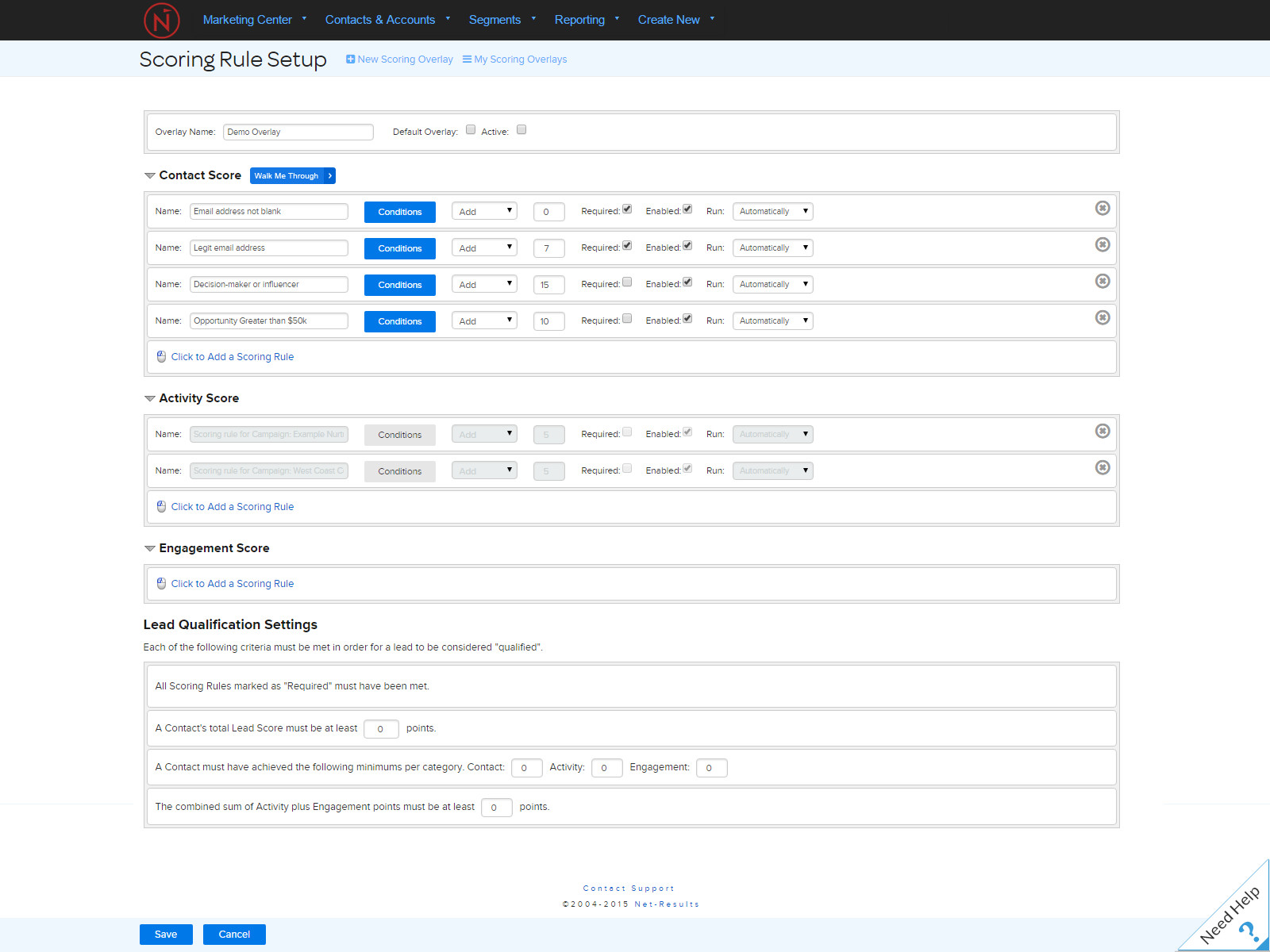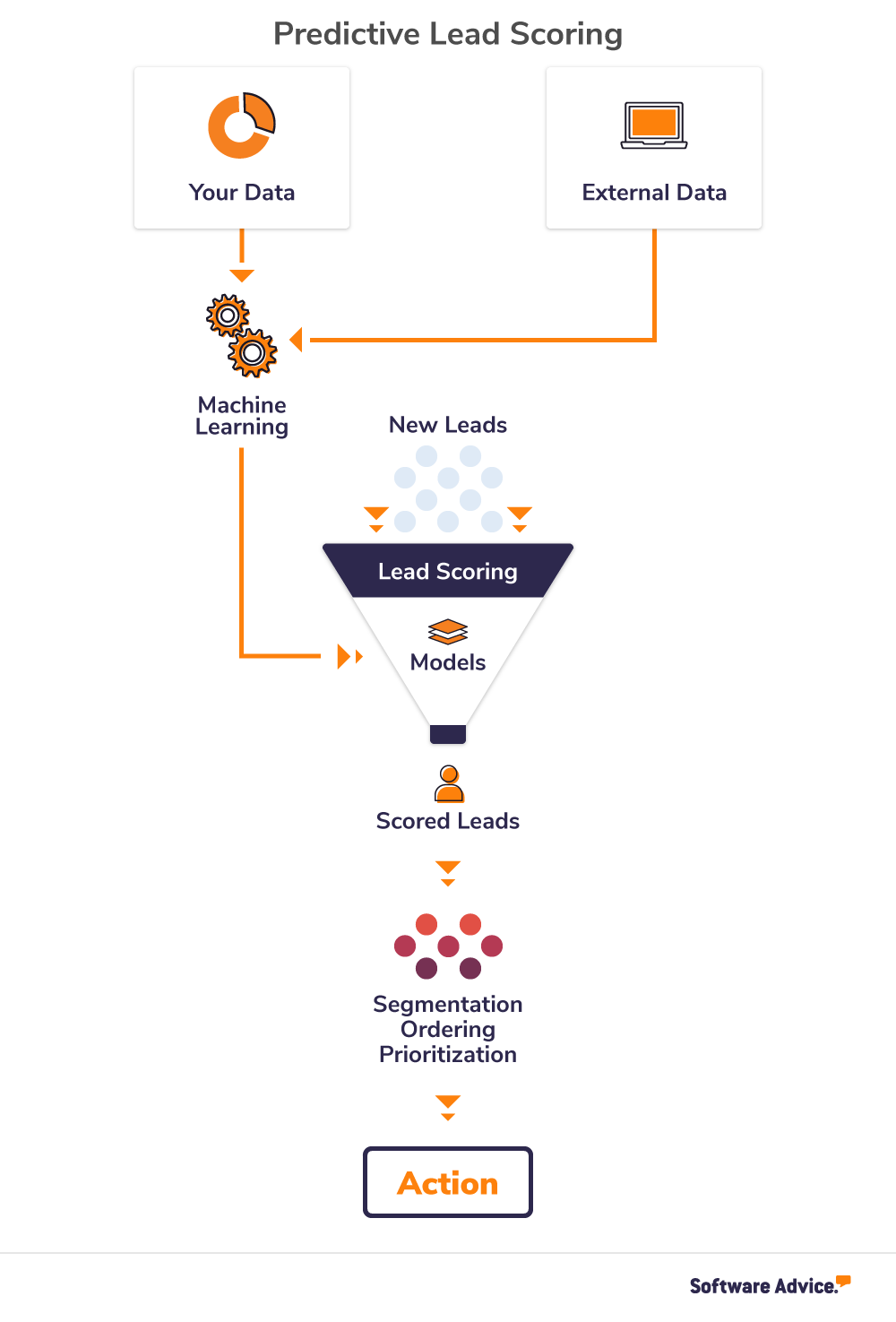Predictive Lead Scoring Is the Future, and You Should be Using It
It’s not a new statistic, but 2.5 quintillion bytes of data are created every day, and over 90 percent of the data in the world has been generated in the last three years alone. If you use marketing or CRM oftware, have a website, send emails, or do anything involving the internet, you are collecting some of this data.
 If you aren’t analyzing your data and using it to develop a lead scoring system yet, you’re not using your software to its fullest and are missing out on revenue. It’s that simple.
If you aren’t analyzing your data and using it to develop a lead scoring system yet, you’re not using your software to its fullest and are missing out on revenue. It’s that simple.
If you’ve never developed a lead scoring strategy, don’t worry. CRM vendors have been hard at work developing AI to help your business leverage the data you collect to drive insights into your customers’ behaviors via predictive lead scoring tools.
Using predictive lead scoring will save your team a tremendous amount of time in the long run and can help alleviate some of the tedious manual efforts required when you use traditional lead scoring.
Here are a few of the benefits you gain by using predictive lead scoring:
✔ You’ll make fewer errors because it takes the human element out of analyzing
✔ Gives your team data-rich information which will increase confidence in decision making
✔ You get a more holistic view of your data because it analyzes everything
✔ It will identify new patterns and relationships you’ve never noticed before
What is lead scoring and why is it important?
Before we jump into the (relatively) new discipline of predictive lead scoring, let’s take a look at a definition of lead scoring:
Lead scoring is the process of providing numerical values to leads based on customer behaviors. Businesses rank leads against a scale using both positive and negative behavioral activity to determine which leads marketing and sales efforts should prioritize.
Identifying good leads is crucial in sales and marketing because it’s true, time really is money: every call you make pursuing a bad lead takes up time you could be speaking with someone that’s ready to buy.
With lead scoring, you’ll be able to get a holistic view of your contacts. See what actions they’ve taken whether positive or negative, and get a better idea about where they fit in your sales funnel.

Net-Results lead scoring rules setup page—note the depth of information in scoring leads (Source)
In the past, lead scoring has been done manually with various levels of success. Here, “manually” just means that marketing and sales teams have developed their own hierarchy for rankings to determine what their ideal lead is.
If you’ve been scoring leads manually and have a CRM, you should seriously consider getting on board with predictive lead scoring to supplement your lead scoring efforts. With the advancement of AI and machine learning, predictive lead scoring is becoming a more common feature in CRMs. We’ll take a closer look below.
So what is predictive lead scoring?
Predictive lead scoring refers to tools that use an algorithm to look at the data you’ve collected in your CRM or marketing tools—as well as external data found in the wild—in order to determine whether leads are qualified or unqualified.
Essentially, it uses machine learning and AI to sift through your contact database to give you more structured information about client behaviors and trends. This information would take you much longer to discover manually.
Predictive lead scoring does the work on the backend for you that manual methods simply don’t allow:

If you’ve always manually scored your leads and don’t trust the robots to give you accurate information, you can always use what the predictive models give you and go through the results with a fine-tooth comb the first few times to go further into your scoring.
Why you should consider predictive lead scoring
Compared to manual lead scoring, predictive lead scoring can sift through all of your data on a regular basis in a fraction of the time to give you more up-to-date analytics.
And let’s face it: humans make errors. It’s just part of life. As long as your data is well maintained and hygienic, you’ll eliminate errors using predictive lead scoring.
Because traditional lead scoring relies on manually defined parameters, a level of subjectivity will always exist, whereas predictive lead scoring is based solely on facts and analytics.
You’ll reduce the amount of bad leads you pursue. And to help you find out just how much each bad lead is costing you, we developed a calculator.
Bad lead cost calculator
Using this calculator is simple:
Take the number of sales reps you have
Include how much each sales rep is paid each year
Find the total cost of your sales team
Plug in the percentage of bad leads you have on average
Calculate how much money your business is losing from bad leads
Predictive lead scoring will help you determine new ways to bucket leads. This is possible because you’ll have more access to richer data sets, which will lead to fewer bad leads and higher ROI.
For instance, if you’re looking for ways to decrease the amount of times your emails are sent to the spam folder, you may look for all the contacts unsubscribing to your email newsletter. If you see a pattern, make a new lead scoring metric and assign a negative value to all contacts who match that pattern so that you aren’t wasting time in the future.
Predictive lead scoring is the future, and it’s here to stay
In 2019, Gartner found that there’s growing interest around predictive functionality from marketing technology and that predictive lead scoring is the most used function (full content available to Gartner clients).
In fact, predictive analytics have been one of the key differentiators for CRM solutions in the past few years. All the major players in the industry are hopping on board the machine learning train, which is great news for you and your business because it’s becoming ever easier to reap the benefits.
The good news for you is that even if you’re business doesn’t yet generate enough data or leads to make full use of predictive analytics, predictive analytics and lead scoring will be there for you when you need them. If you’re ready to find a CRM with the functionality that serves your business, fill out this form.